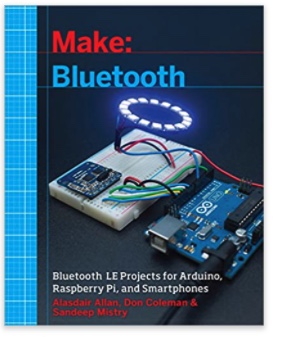Recent Posts
Bluetooth Low Energy (BLE) Projects with Arduino, Raspberry Pi, And Smartphones
Posted by on
Bluetooth Low Energy (BLE) is a wireless personal area network technology designed and marketed by the Bluetooth Special Interest Group (Bluetooth SIG) aimed at novel applications in the healthcare, fitness, beacons, security, and home entertainment industries. Compared to Classic Bluetooth, Bluetooth Low Energy is intended to provide considerably reduced power consumption and cost while maintaining a similar communication range.
Mobile operating systems including iOS, Android, Windows Phone and BlackBerry, as well as macOS, Linux, Windows 8 and Windows 10, natively support Bluetooth Low Energy. The Bluetooth SIG predicts that by 2018 more than 90 percent of Bluetooth-enabled smartphones will support Bluetooth Low Energy.
Bluetooth Low Energy is not backward-compatible with the previous (often called "classic") Bluetooth Basic Rate/Enhanced Data Rate (BR/EDR) protocol. The Bluetooth 4.0 specification permits devices to implement either or both of the LE and BR/EDR systems.
Bluetooth Low Energy uses the same 2.4 GHz radio frequencies as classic Bluetooth, which allows dual-mode devices to share a single radio antenna. LE does, however, use a simpler modulation system.
This book, Bluetooth LE Projects with Arduino, Raspberry Pi, and Smartphones, is where your adventures with Bluetooth LE begin. You'll start your journey by getting familiar with your hardware options: Arduino, BLE modules, computers (including Raspberry Pi!), and mobile phones.
From there, you'll write code and wire circuits to connect off-the-shelf sensors, and even go all the way to writing your own Bluetooth Services. Along the way you will look at lightbulbs, locks, and Apple's iBeacon technology, as well as get an understanding of Bluetooth security, both how to beat other people's security, and how to make your hardware secure.
 With Bluetooth Low Energy (BLE), smart devices are about to become even smarter. This practical guide demonstrates how this exciting wireless technology helps developers build mobile apps that share data with external hardware, and how hardware engineers can gain easy and reliable access to mobile operating systems.
With Bluetooth Low Energy (BLE), smart devices are about to become even smarter. This practical guide demonstrates how this exciting wireless technology helps developers build mobile apps that share data with external hardware, and how hardware engineers can gain easy and reliable access to mobile operating systems.
This book provides a solid, high-level overview of how devices use BLE to communicate with each other. You’ll learn useful low-cost tools for developing and testing BLE-enabled mobile apps and embedded firmware and get examples using various development platforms, including iOS and Android for app developers and embedded platforms for product designers and hardware engineers.
- Understand how data is organized and transferred by BLE devices
- Explore BLE’s concepts, key limitations, and network topology
- Dig into the protocol stack to grasp how and why BLE operates
- Learn how BLE devices discover each other and establish secure connections
- Set up the tools and infrastructure for BLE application development
- Get examples for connecting BLE to iPhones, iPads, Android devices, and sensors
- Develop code for a simple device that transmits heart rate data to a mobile device
 Loading... Please wait...
Loading... Please wait...

